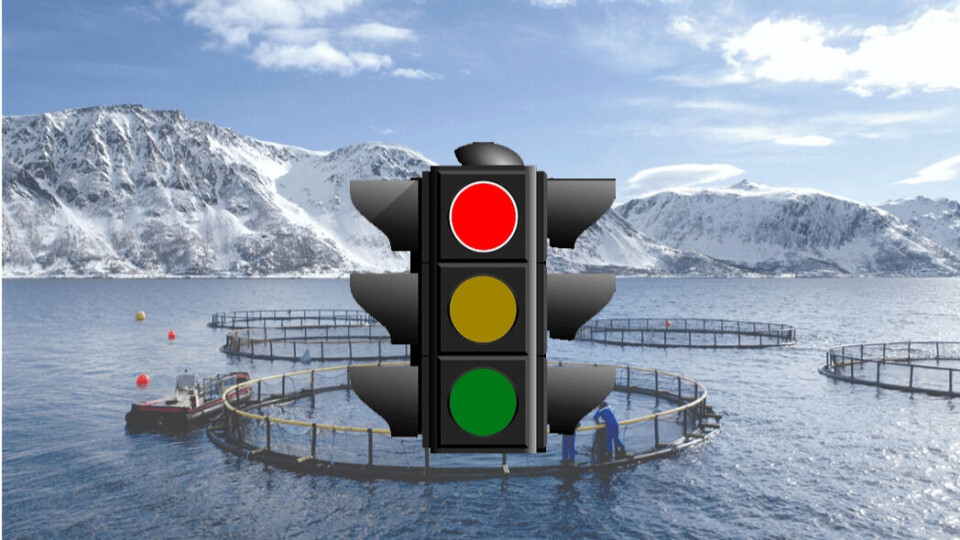
Norway ‘traffic light’ verdict due in mid-March
A verdict in the case between the Norwegian state and a group of salmonid farmers challenging an order to reduce production will be delivered on or around March 17.
Proceedings in Sogn og Fjordane District Court finished yesterday after nine days of testimony from expert witnesses and presentations and questions from lawyers.
The case centres around Norway’s “traffic light” system, which divides the country’s coast into 13 defined areas, from area 1 in the south to area 13 in the far north. The areas are given a green, yellow and red traffic light designation depending on the perceived risk of sea lice-induced mortality among wild salmon. Capacity is adjusted by 6% upwards (green) or down (red). In yellow areas, capacity is frozen.
‘Weak science’
The 25 salmonid farmers in production area 4 (PO4), including Mowi and Scottish Sea Farms co-owner Lerøy, claim the scientific basis for a red-light designation for the area is weak, and that production levels should be maintained.
Their lawyer, Trond Hatland, told the court at the outset that the farmers were contesting only the decision in PO4, not the traffic light system per se.
But the farmers’ arguments against the decision have called into question the predictive models that are a key plank of the traffic light designations, effectively putting the system on trial.
Models ‘inaccurate’
Hatland contended that the models used to show that lice from farmed salmon have a significant effect on wild fish are inaccurate and have little in common with each other, and the most critical models are wrong.
He said information gathered by farmers that might have prevented a red light had been rejected by the traffic light system’s expert group because it was not presented in a form that met given scientific requirements, and some because it had not been submitted by August 2019.
Witnesses called by the farmers also challenged, among other things, the accuracy of lice counts from smolts in sentinel cages, the timing of monitoring of smolt migration and the assumption that all wild smolts die once a lice infestation of more than 0.3 lice per gram is reached.
Best experts in Norway
State lawyers Knut Klever Naess and Hilde Lund have argued that the panel making recommendations about which traffic light is assigned to each production area comprised the best experts in Norway, and that the group took into account discrepancies between different predictive models, and other factors raised by Hatland.
They also claimed the farmers could afford to reduce production by a small amount.
Knaess told the court: “A reduction in production of 6% is not a very intrusive measure. The farmers are still allowed to produce 94% of the permit, despite the fact that the experts have concluded that the impact on the wild salmon is unacceptable.”
Low prices
That was countered by Håkon Tombre, general manager of Tombre Fiskeanlegg, one of the companies taking action against the state.
He told the court that low prices caused by the Covid-19 pandemic meant the firm was struggling to break even.
“When we get NOK 40 a kilo, we simply lose money on slaughtering the fish,” said Tombre.
6% cut would hurt
If the state gets its way, Tombre Fiskeanlegg must reduce its production by 6% in PO4, where it has three sites.
“The reduction removes the basis for harvesting the biomass. If we had received a reduction in all our permits, including those in PO3, it would have been 720 tonnes lost, which is almost (the biomass of) a small licence,” said Tombre.
The case was presided over by a judge, Jørn Lasse Refsnes, who will make the decision on the farmers’ claim.






















































